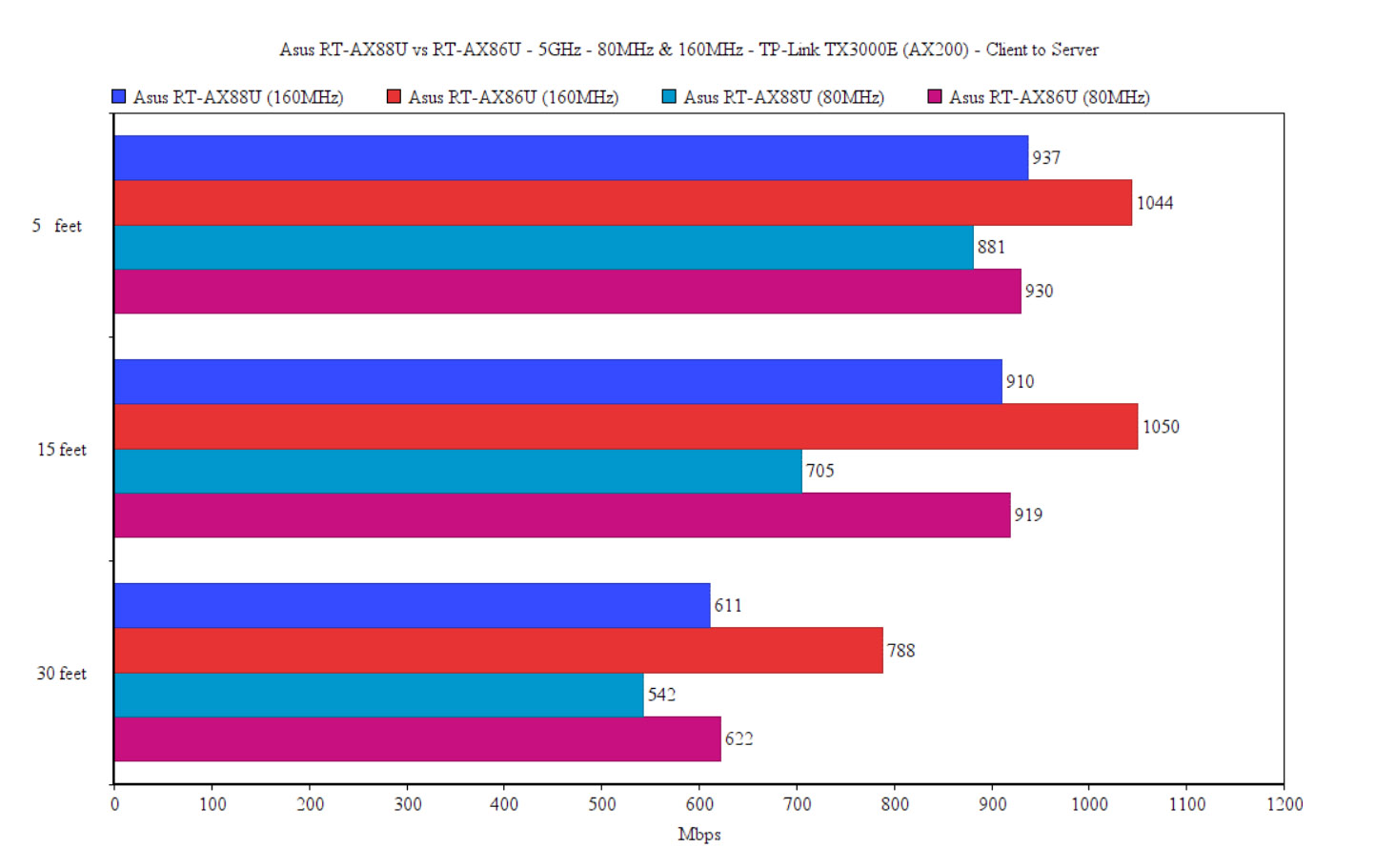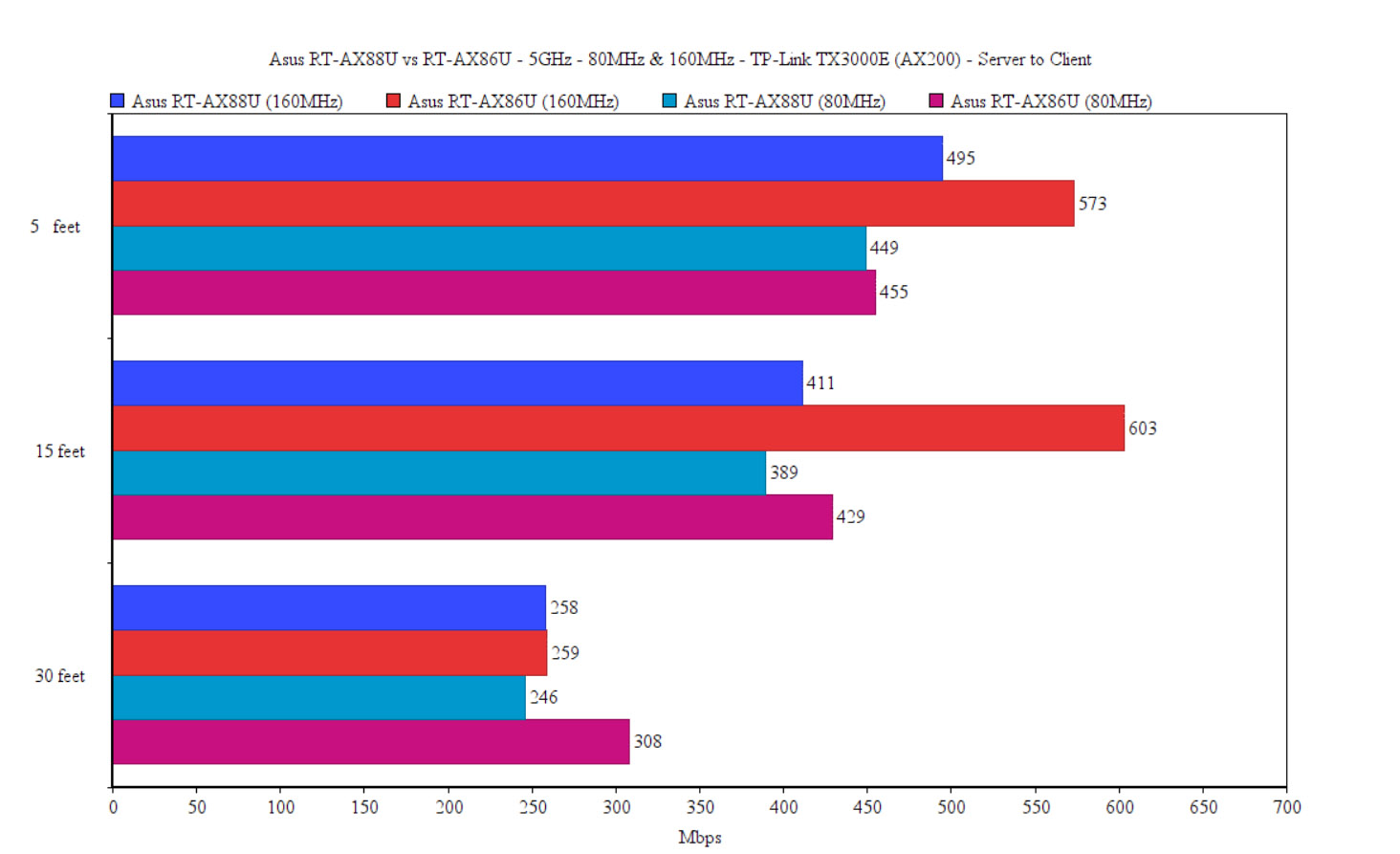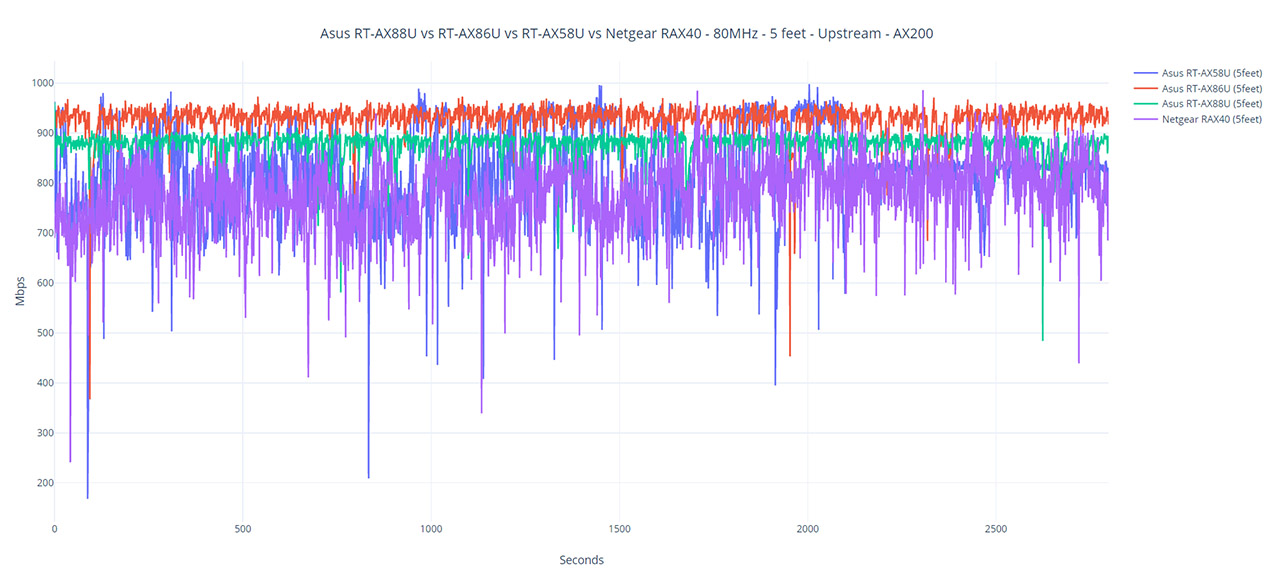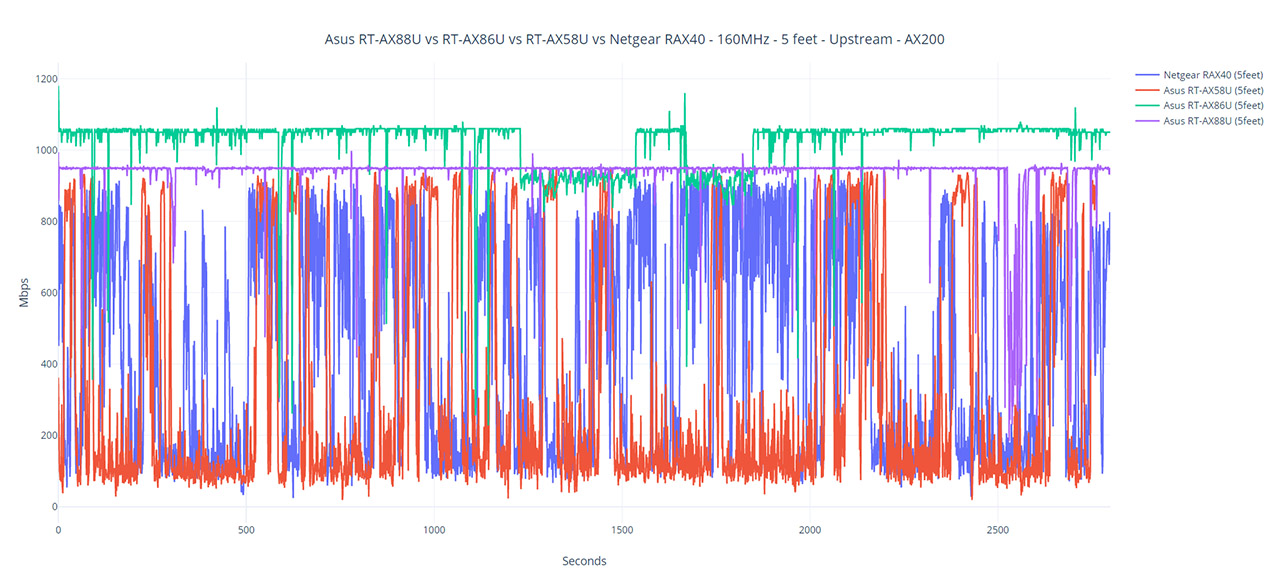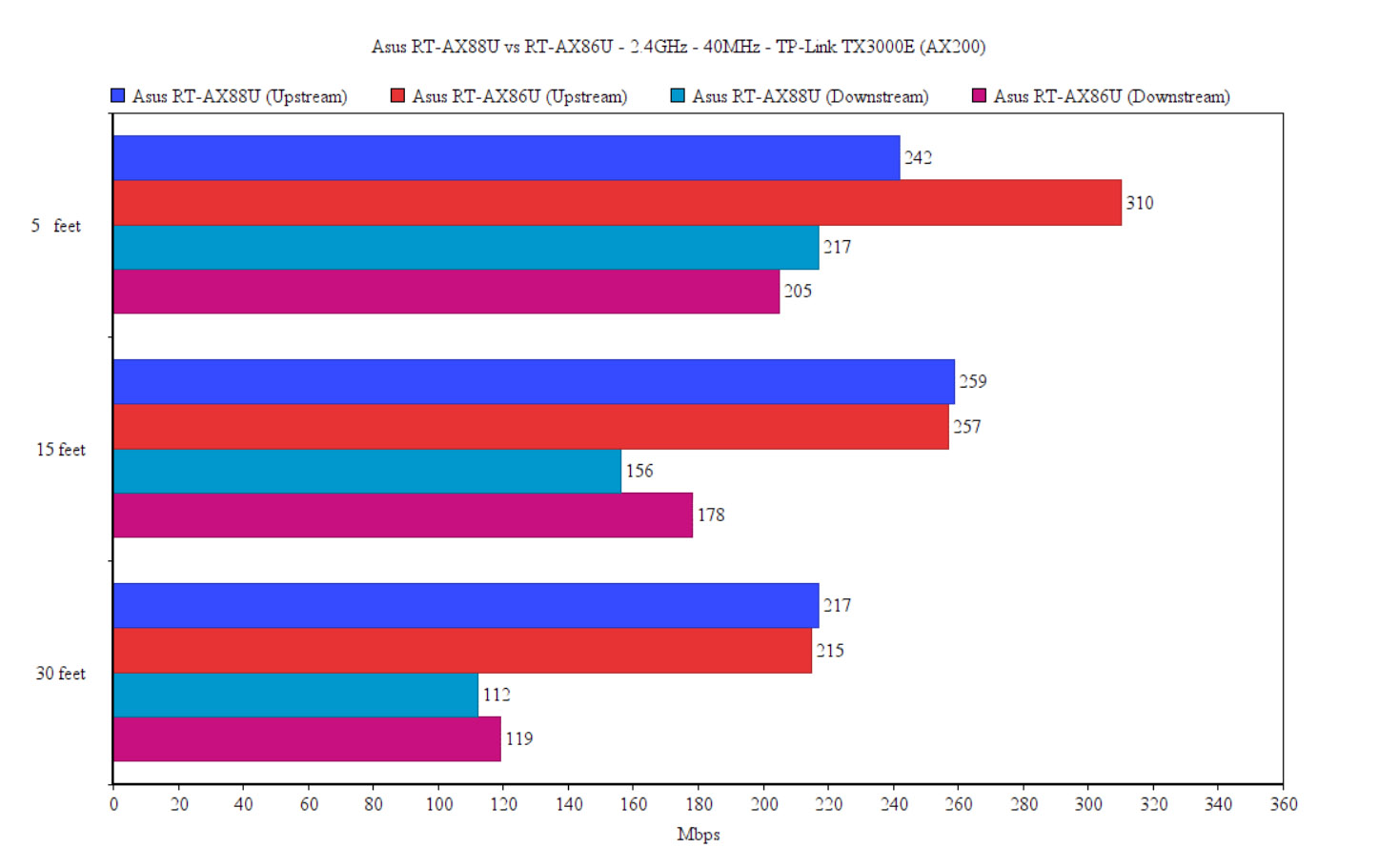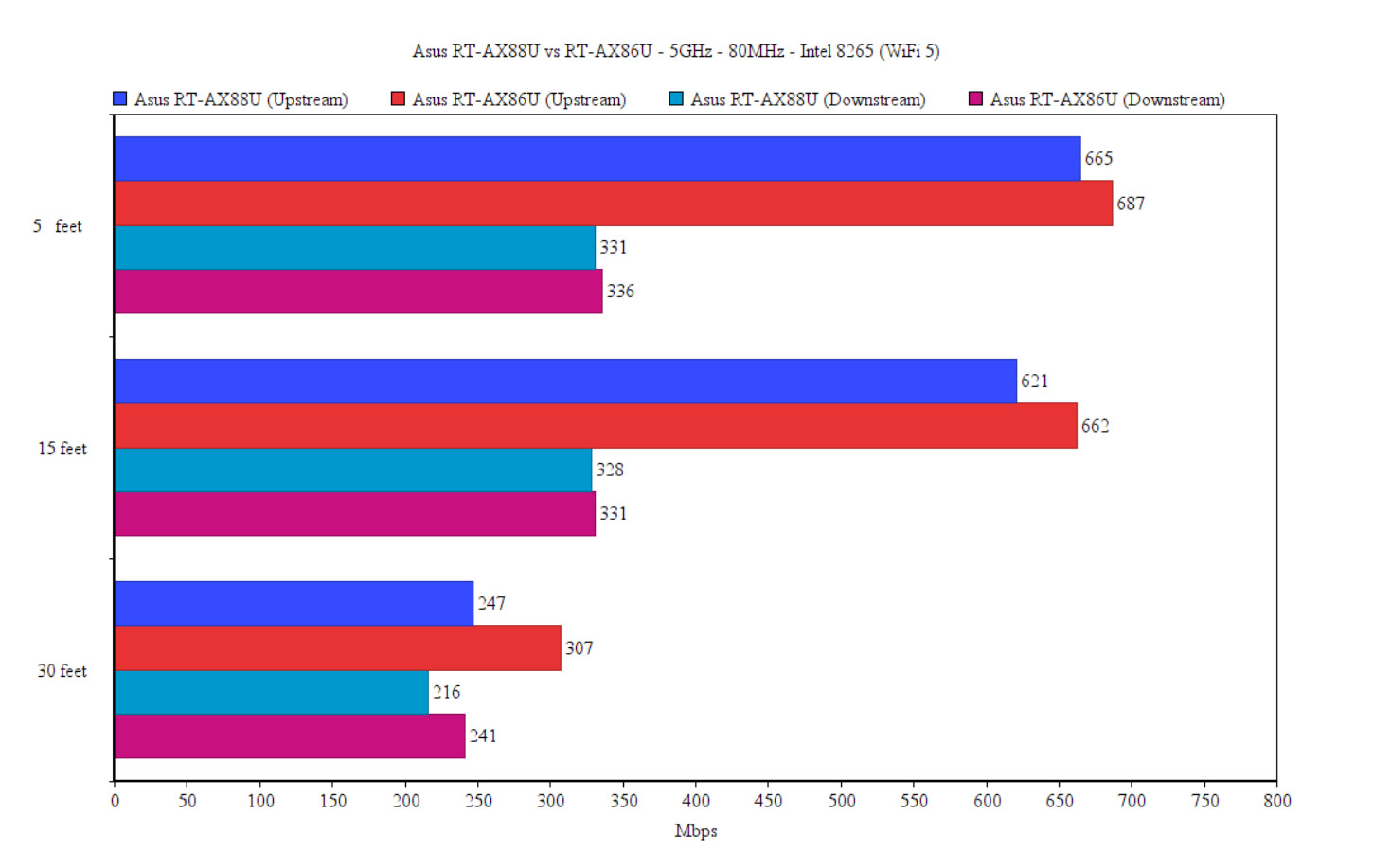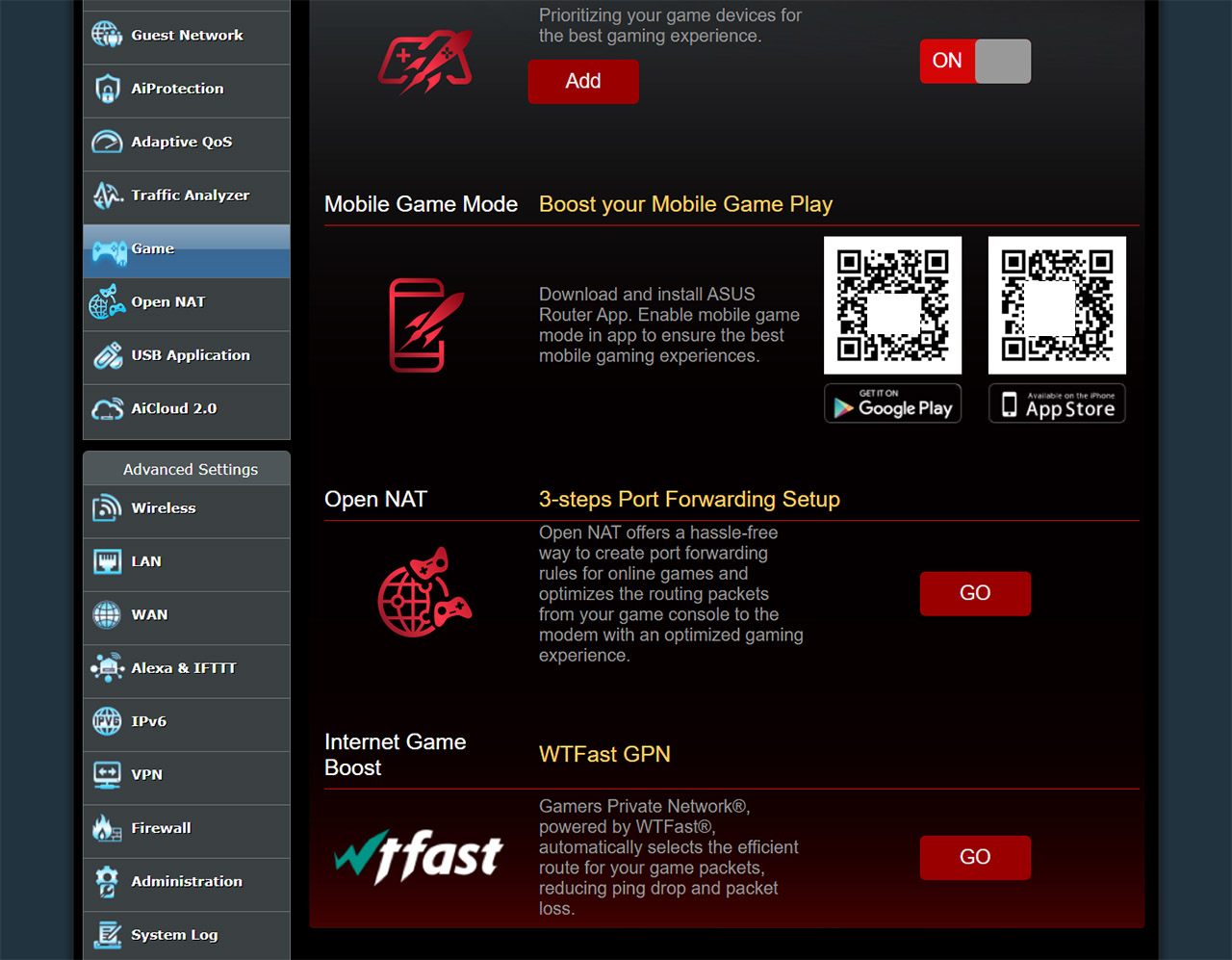So, feature-wise, you get pretty much the same package regardless of the router you choose, but the wireless performance does reveal a few interesting things. The way I tested each router was to rely on a server device and a few clients, one supporting the WiFi 6 technology (it was equipped with an Intel AX200 WiFi adapter – TP-Link TX3000E) and the other supporting the WiFi 5 standard (an Intel 8265). I did also try out a couple of other WiFi 5 client devices which were equipped with PCE-AC88 and PCE-AC68 adapters, but they did not play nice, delivering a highly unstable throughput, especially at 160MHz, so I would avoid using these cards with the two Asus routers from this article. The first test was done with the WiFi 6 client which was connected to the 5GHz network (the 160MHz channel bandwidth) and the Asus RT-AX86U surpassed the 1Gbps limit thanks to the 2.5Gbps port. Upstream, at 5 feet, it delivered an average of 1,044Mbps and, at 30 feet, I saw an average of 788Mbps. Downstream, the performance was still impressive, with an average throughput of 573Mbps at feet an an average of 259Mbps at 30 feet. The Asus RT-AX88U performed really good as well, but you can clearly see the 1Gbps limitation.
Upstream, I saw an average of 937Mbps at 5 feet and an average of 611Mbps at 30 feet. Downstream, the RT-AX88U delivered an average throughput of 495Mbps at 5 feet and an average of 258Mbps at 30 feet. Next, I switched to the 80MHz channel bandwidth and checked out the wireless performance of the RT-AX86U. This time, it didn’t go over the 1Gbps limit, but the throughput on the 5GHz network was still excellent: upstream, I saw an average of 930Mbps at 5 feet and an average of 622Mbps at 30 feet. Downstream, the average throughput at 5 feet was 455Mbps and at 30 feet, it was 308Mbps. The Asus RT-AX88U was a bit below the RT-AX86U, so, upstream, I saw an average of 881Mbps at 5 feet and 611Mbps at 30 feet. Downstream, the router managed to deliver an average of 449Mbps at 5 feet and an average of 246Mbps at 30 feet.
So yes, using a WiFi 6 client, the Asus RT-AX86U does perform better on the 5GHz network, but let’s see the 2.4GHz performance with the same client (40MHz). The Asus RT-AX86U was again, excellent, offering an upstream throughput of 310Mbps at 5 feet and an average of 215 at 30 feet.
I expected the Asus RT-AX88U to perform better, but it didn’t, offering an average of 242Mbps at 5 feet (upstream) and an average of 217Mbps at 30 feet (even so, the performance is very close between the two routers).
The last wireless test was done with a WiFi 5 client equipped with the Intel 8265 adapter which is limited to 80MHz (channel bandwidth). The first router was the RT-AX86U and, while connected to the 5GHz network, I saw an average throughput of 687Mbps at 5 feet (upstream) and an average of 307Mbps at 30 feet. The Asus RT-AX88U performed similarly, at least next to the router, so, upstream, at 5 feet, I saw an average of 665Mbps and at 30 feet, I got around 247Mbps.
The last test is the storage performance using a multimedia folder from an SanDisk Extreme external SSD which was connected to one of the two USB 3.0 ports on either router. The RT-AX86U delivered an average read speed of 112MBps and an average write speed of 103MBps. The Asus RT-AX88U offered an average read speed of 113MBps, but an average write speed of only 78MBps.
The App and the Web Software
The mobile application is pretty much identical for both routers (with the exception of the router icons), so you get that animated Home page with various status info in the middle, the possibility to see the AiMesh network nodes and the Game Mode. This feature is available on both routers and it’s a way to give the mobile device that you’re using the highest priority (QoS). This way, if you decide to play some mobile games, you do get less latency – and I’m not talking about those annoying ad-filled games, but the proper ones that you can play using Cloud streaming platforms (GeForce Now, Stadia and so on). The app will also let you enable AiProtection on both routers (to do more than enabling it, check the web UI) and each device does have a proper Family section. It’s a renamed Parental Controls and it allows you to choose between various Profiles based on age, to create a schedule for Internet access and to set which type of content can be viewed by the user (depending on the connected client device). Asus has also recently pushed an automatic way to set up an IPSec connection to the home router from a public WiFi using the Instant Guard.
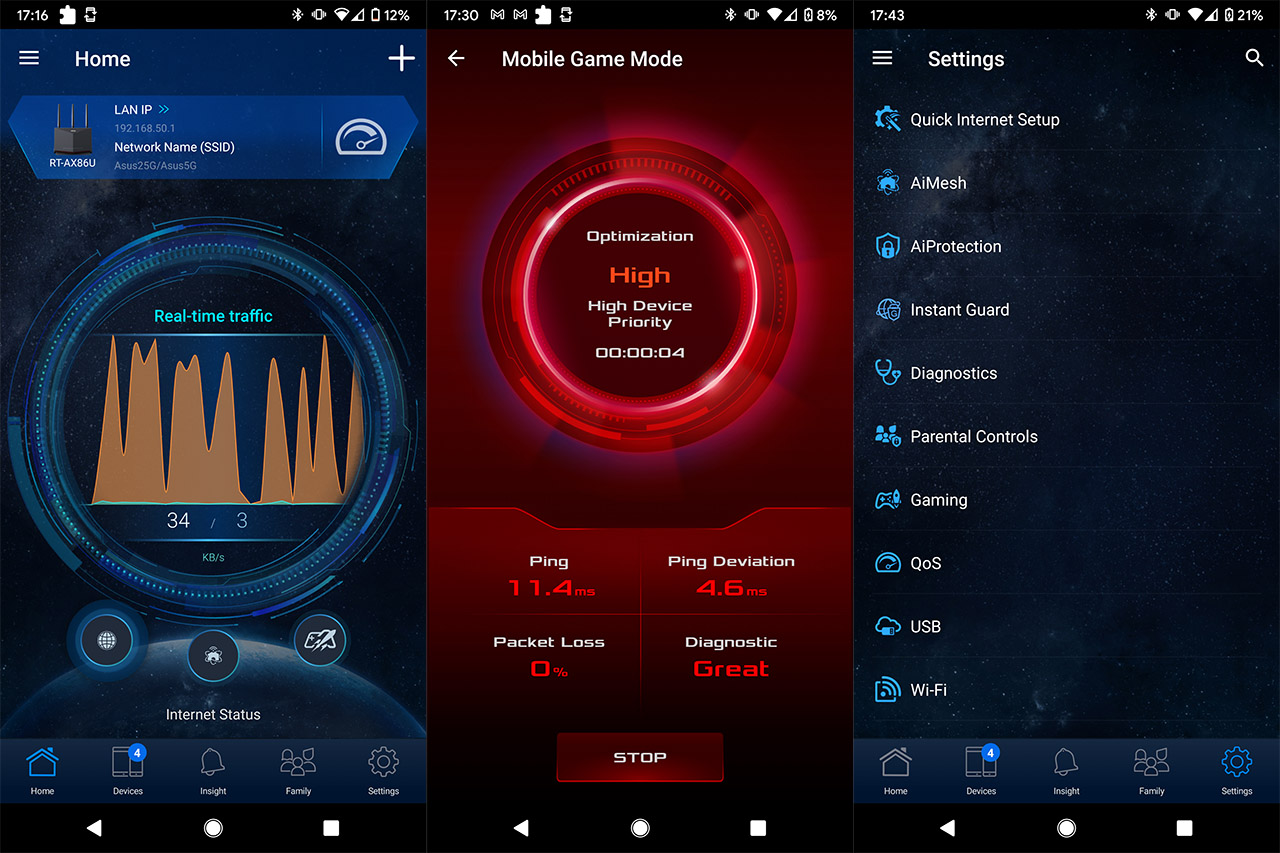
But you will have to use a separate app, as expected. If you want to configure a different type of VPN or see more options, you will need to check out the web-based interface and, of course, both the Asus RT-AX88U and the RT-AX86U have the same default IP address (192.168.50.1). Enter it in any browser URL and you should be able to see the UI. The AiProtection will offer more control (although still quite limited), so you can enable what parts your prefer for the security of your router (you can read more about what data is collected by Trend Micro here), the USB application is clearly defined and the Wireless section goes far more in-depth than the app – the Professional section is a joy to configure. The WAN section will allow you to set up the Dual-WAN feature on both routers (and on the RT-AX86U you do get the 2.5GbE port for a superior connection) but, considering that Asus has advertised both of these devices as gaming routers, you do get a few additional features to help in this regard.
Indeed, both the RT-AX88U and the RT-AX86U have what is called the Open NAT to create automatic port forwarding rules for either preset games or custom ones (I do like that Asus does try to un-complicate things, but without removing the specific feature).
Something that’s missing on the RT-AX86U, but it is present on the RT-AX88U is the WTFast which is a private global network that serves a better path towards the game server, therefore improving the latency, but be aware that not all gaming companies will be happy to see you’re using a GPN, so it can end up with a ban (ask the devs before using it).
Lastly, it’s worth mentioning that Merlin does support both routers with its third-party software.
Conclusion
As I asked in the title, are four extra Gigabit ports better than a 2.5GbE port? And the answer is no. It’s true that both routers have a good design (although the RT-AX88U is absolutely huge), but the wireless performance is clearly different because of that 2.5Gbps port. The RT-AX88U performs well and it offers a stable throughput (you also get far more ports for your wired clients, mostly gaming devices), but the RT-AX86U is simply better in almost every test, especially with an AX200 client. And this is where Asus gets weird because the price tag may suggest that the RT-AX88U is the superior option (at the moment of writing), but if you want the maximum from a dual-band WiFi 6 router, the RT-AX86U is the device to get.

Mark is a graduate in Computer Science, having gathered valuable experience over the years working in IT as a programmer. Mark is also the main tech writer for MBReviews.com, covering not only his passion, the networking devices, but also other cool electronic gadgets that you may find useful for your every day life.

